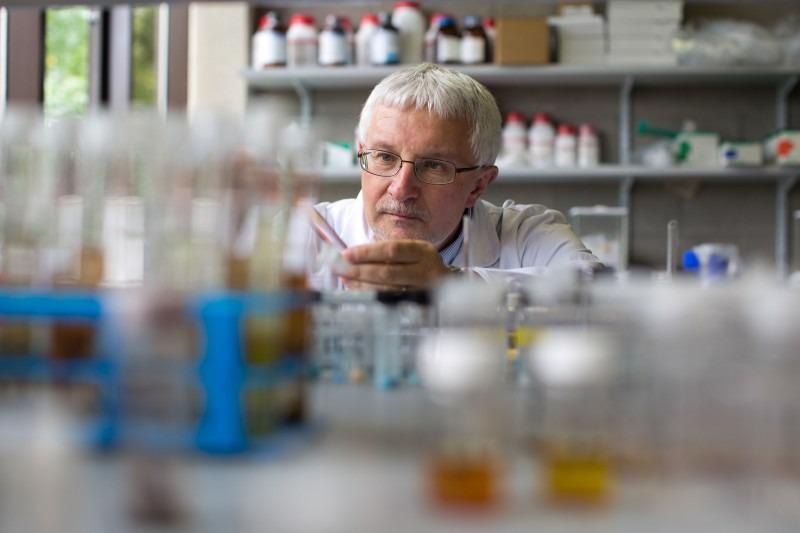University of Limerick researchers have invented an innovative polymer that can collect hazardous substances from the air.
 Professor Michael Zaworotko, Bernal Chair of Crystal Engineering and Science Foundation of Ireland Research Professor at University of Limerick’s Bernal Institute. Image Credit: University of Limerick
Professor Michael Zaworotko, Bernal Chair of Crystal Engineering and Science Foundation of Ireland Research Professor at University of Limerick’s Bernal Institute. Image Credit: University of Limerick
According to the researchers, the material is capable of absorbing trace levels of benzene, a harmful contaminant, from the air while using less energy than existing materials.
The researchers believe that the sponge-like porous material might revolutionize the hunt for clean air and have a big influence on the fight against climate change.
The new material was created by Professor Michael Zaworotko, Bernal Chair of Crystal Engineering and Science Foundation of Ireland Research Professor at the University of Limerick’s Bernal Institute, and colleagues, with findings published in the acclaimed journal Nature Materials.
VOCs, or Volatile Organic Compounds, which include benzene, are a class of hazardous chemicals that have serious environmental and health consequences. Conceiving solutions to remove benzene from the air at trace amounts while also having a low energy footprint has been difficult until now.
A family of porous materials - like sponge - have been developed to capture benzene vapor from polluted air and produce a clean air stream for a long working time. These materials could be regenerated easily under mild heating, making them candidates for air purification and environmental remediation.
Prof Michael Zaworotko, Bernal Chair of Crystal Engineering, University of Limerick
Prof. Zaworotko explained, “Our materials can do much better in both sensitivity and working time than traditional materials.”
Professor Zaworotko and Dr. Xiang-Jing Kong of UL’s Department of Chemical Sciences created the new porous material, which has a great affinity for benzene that it catches the hazardous chemical even when it is present in concentrations as low as 1 part per 100,000.
According to the researchers, this substance resembles Swiss cheese as it is full of holes, which attract benzene molecules.
The energy footprint of capture and release is substantially smaller than earlier generations of materials because the capture method relies on physical rather than chemical bonding.
“Breaking up gas mixtures is hard to do. This is especially true for the minor components that comprise air, which include carbon dioxide and water. The properties of our new material show that breaking up is no longer hard to do for benzene,” added Prof. Zaworotko.
Professor Zaworotko’s lab previously developed cutting-edge materials for carbon capture and water harvesting. The water harvesting material is already being utilized in dehumidification systems because of its favorable capabilities for gathering and releasing water from the atmosphere.
Based on smart design, our materials do well in addressing challenges of both technical and social relevance, such as trace benzene removal from air. This is hard for conventional materials, and thus highlights the charm of porous materials.
Dr. Xiang-Jing Kong, Department of Chemical Sciences, University of Limerick
The findings imply that a new generation of tailored porous materials, such as those developed at UL, might enable a more universal approach to harmful chemical collection from the air.
“Aromatic isomers are difficult to separate in their mixtures with traditional methods, which are always energy-intensive. This research opened up possibilities to design porous materials for efficient separation of these chemicals with low energy input as well as removal of other trace pollutants from air,” explained Dr. Xiang-Jing Kong
The European Research Council and Science Foundation Ireland supported the research.
Journal Reference:
He, T., et al. (2022) Trace removal of benzene vapour using double-walled metal–dipyrazolate frameworks. Nat. Mater doi:10.1038/s41563-022-01237-x.